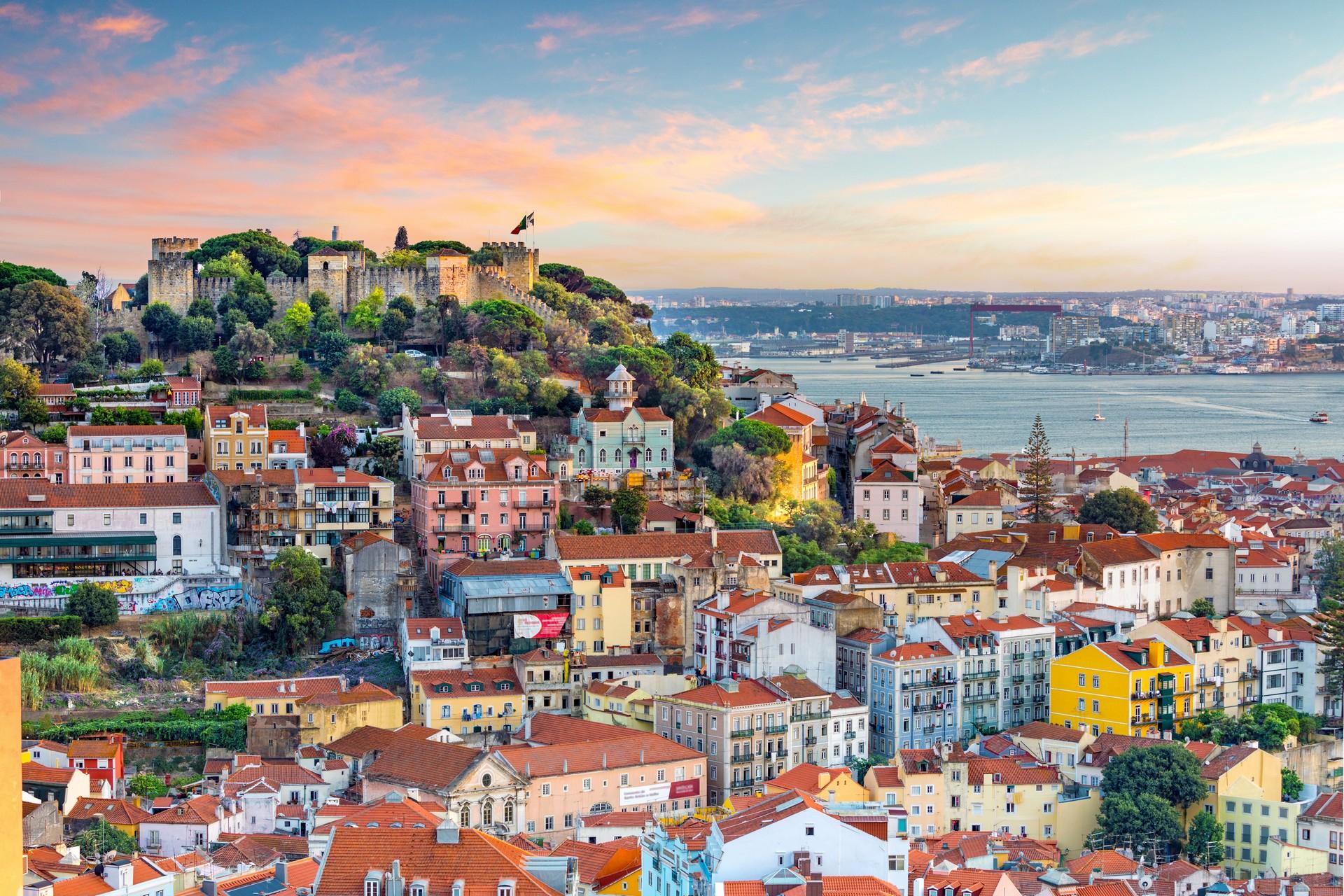Europe in March has a mix of different types of weather with a huge variety. In March, you can still get a taste of Europe's relatively harsh winters, most commonly in the northern part of Scandinavia, but you can also enjoy pleasant and often sunny days in southern Europe, where temperatures in March can reach 20 °C (southern Spain).
In our article we would like to entice you to visit European cities in March. As we know, you don't need perfect weather to explore the cultural beauty of cities. On the contrary, walking through city streets in the heat can be really uncomfortable and, for many risk groups, even life-threatening. We've rounded up 7 cities across Europe that are often overrun with tourists during the high season. When you visit these cities in March, you'll especially appreciate the lower number of tourists and often lower prices. The truth is that we cannot guarantee cloudless and rain-free weather in March, but we believe that even if you do get caught in a shower, it won't spoil your sightseeing holiday.
Berlin
Berlin is a modern, multicultural centre spiced with unusual businesses and a fascinating history. The German capital is the most northerly of our selection of cities, which means you won't get too hot in Berlin in March. Perfect weather is definitely not what you're going to Berlin for in March. Average daytime temperatures hover around 9 °C. Pack an umbrella just in case, as March has about 9 days of rain.
Berlin has a sense of the recent past, as the remains of the Berlin Wall, such as the section known as the East Side Gallery, are clearly visible here as a reminder of the division of Europe into East and West. Berlin is home to all the major government buildings, including the historic Reichstag, today's seat of the German Parliament. Don't forget to visit the famous Brandenburg Gate and the very impressive Holocaust Memorial.
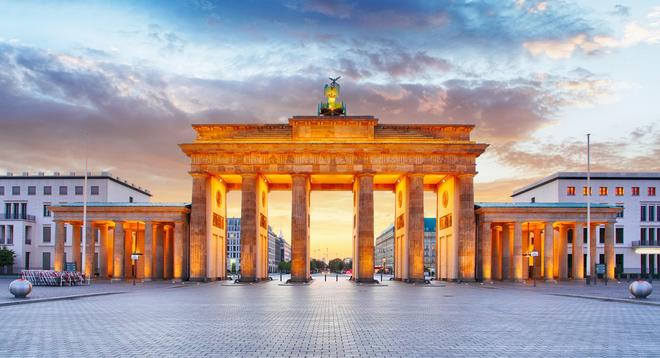
The so-called Museum Island on the River Spree is made up of five world-renowned museums and has been a UNESCO World Heritage Site since 1999. It includes the New and Old National Gallery, the Bode Museum and the Pergamon Museum. The Pergamon Museum, for example, is the most visited museum in Germany, where you can see various objects from many ancient empires.
Berlin is an attractive destination for its young and cosmopolitan atmosphere. This is best experienced in the famous bohemian Kreuzberg district. The local streets are famous for their nightlife and are home to many restaurants, clubs, as well as cafes and shops offering vintage fashion.
Vienna
We move south to the Austrian capital of Vienna, one of Europe's most visited cities. Average temperatures in March are 2 °C higher than Berlin and you can experience 4 hours of sunshine a day under clear skies, unless you're inside exploring one of the world-class museums. In Vienna, you'll get a taste of the imperial atmosphere of the former Habsburg Empire, especially if you walk through the inner city along the Ringstrasse (about 5 km), lined with historical buildings such as the State Opera House, the Town Hall, the Parliament building and the Natural History and Art History Museum.
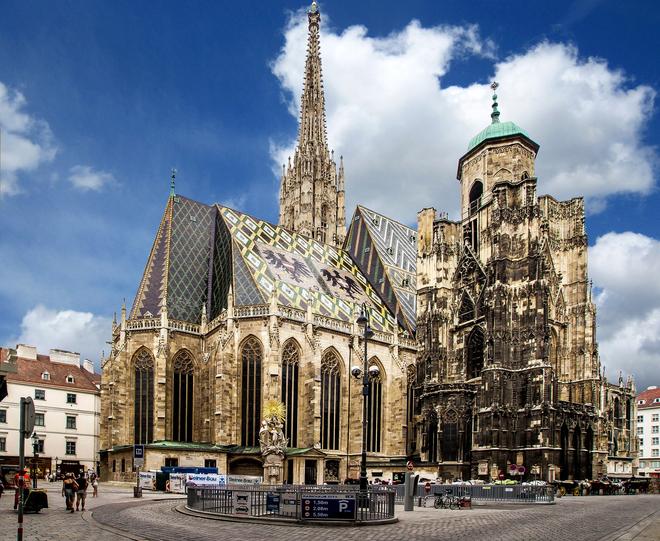
Vienna's dominant feature is definitely the imposing Gothic Stephansdom Cathedral with its colourful roof. Climb the 343 steps to the top of the 136 metre high south tower and don't miss the breathtaking view of the whole of Vienna. The Hofburg Castle complex in the city centre has been the seat of the monarchs since 1275 and today one of its wings is home to the Austrian president. While touring the Imperial Chambers, you can also visit the iconic Empress Sissi Museum and the treasury with the Habsburg crown jewels.
The Habsburg Tomb should definitely not be missing from your list. The remains of the Habsburgs have been stored in the crypt of the unassuming church on Neuer Markt Square since 1633 until the present day. Maria Theresa and other famous figures of Habsburg history have their sarcophaguses here.
Vienna is also a modern, vibrant city known for its culinary delights. Don't forget to reward yourself with an authentic Wiener schnitzel, or take a break with a Sacher cake and Viennese coffee.
Budapest
There is something for everyone in Budapest, Hungary, also known as the "Pearl of the Danube" or the "Paris of the East". Admire monuments reminiscent of the Austro-Hungarian Golden Age, relax in the renowned spa and sample traditional wines and spicy sausages in one of the many stylish bars.
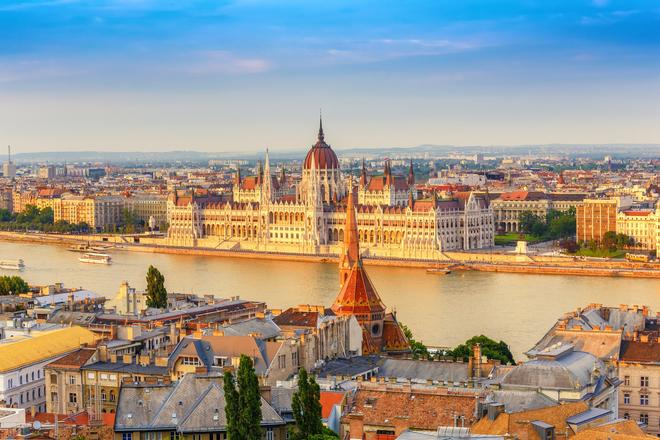
Among Budapest's highlights, don't miss the magnificent Hungarian Parliament Building, Buda Castle, St. Stephen's Basilica (named after the founder of the Hungarian state) or the Fisherman's Bastion (Halászbástya). An interesting experience is the memorial called Shoes on the Danube bank, which in the form of several dozen steel shoes refers to the victims who were shot here during World War II. It is located on the Danube embankment about 300 metres south of the Parliament.
If you go to Budapest in March, don't forget to pack your swimsuit. Not because you need to swim in the Danube, but mainly to visit the local thermal baths. There is a geological fault beneath Budapest that causes many thermal springs to spring up here. Average temperature in Hungary in March is around 11 °C, so the warm thermal waters will warm you up nicely. The most famous baths in the centre of Budapest are Széchenyi Baths, Gellért Thermal Bath or Király Thermal Bath. While relaxing, you can admire the beautiful architecture of these spa complexes or go to the sauna and steam chamber.
Rome
In March Rome will entice you with pleasant temperatures of over 15 °C and an average of 5 hours of sunshine a day. The sights are admired the world over, as Italy's capital is the cradle of European culture and civilisation. All roads lead to Rome, what about yours? Undoubtedly Rome's most famous monument is the Colosseum – the famous gladiatorial arena where bloody games and gladiatorial matches were played out in the name of the emperor. Rome's best-preserved ancient monument is the Pantheon, or temple of all the gods, which is a national monument and houses the tombs of Italian kings and painters.
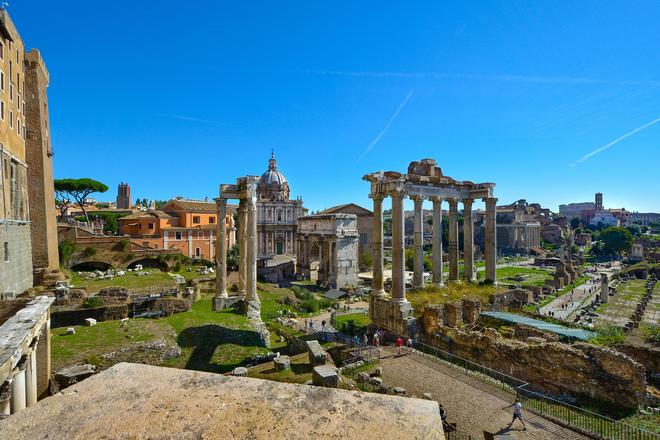
In the middle of Rome, the smallest and most visited city-state, the Vatican City, covers an area of 44 hectares. It is the focal point of the Roman Catholic world under the lifetime rule of the Pope. You can meet the Pope in the famous St Peter's Square. Every Sunday (when he's not travelling), he blesses the people here. In Vatican City, you should not miss St. Peter's Basilica, one of the largest churches in the world.
We must not forget to mention other famous Roman sites such as the Trevi Fountain, the Spanish Steps and the Forum Romanum. The Forum Romanum, the oldest part of Rome, was in the past the real centre of the civilization of the time, today it is an important archaeological site from the times of ancient Rome.
During your wanderings around Rome, stop at one of the many cafes or bakeries and take a break for a real Italian espresso and a delicious tiramisu. Other specialities of Italian cuisine probably need no introduction, but typical of Rome are pickled artichokes (carciofi) in olive oil with fresh herbs or pasta "caccio e pepe" with pecorino romano cheese and a good dose of pepper.
Barcelona
Vibrant Catalan Barcelona on the Mediterranean coast is a popular tourist destination at any time of year. But March is extra pleasant here thanks to low rainfall, pleasant temperatures of over 15 °C during the day and the chance of up to 6 hours of sunshine a day. Ideal conditions for your holiday full of discovery. Lovers of nightlife will find a place to enjoy, but also admirers of monuments and interesting architecture.
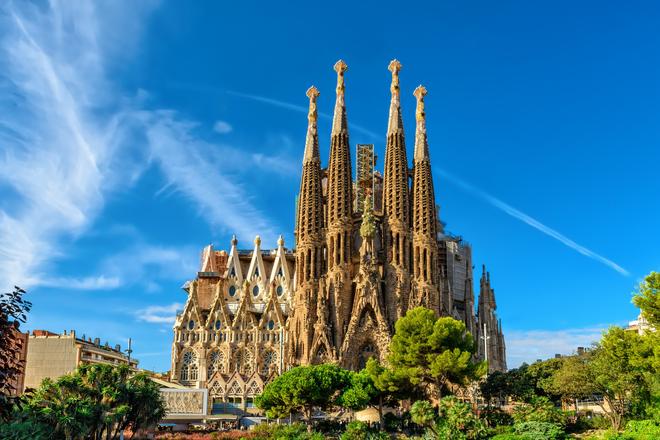
Who doesn't know the Catalan architect Antoni Gaudí. You will have the chance to see his original buildings in Barcelona. Don't miss a visit to Casa Milà or Casa Batlló. Both of these eccentric buildings are UNESCO World Heritage Sites. Gaudí's most famous building is the Sagrada Família temple and it is definitely one of the most original religious buildings in the world. Construction of the temple began in 1882 and its completion was planned for 2026, the 100th anniversary of the death of Antoni Gaudí. However, due to the coronavirus situation, it will not be completed until 2030. If you go on an interior tour, be sure to include an entrance fee for the towers with their breathtaking views of Barcelona.
Among Gaudí's other works, we must not forget the magnificent Park Güell. Head here and enjoy the tranquillity in a setting full of stone sculptures, greenery and flowers. You'll feel like you're in a fairy tale. You'll have to pay to see the most touristy part of the park.
When wandering around Barcelona, you'll definitely want to visit La Rambla, the main shopping street that stretches from Plaça de Catalunya to the port, where it ends with the famous Mirador de Colom. This main shopping and entertainment avenue tends to be very crowded and transforms as dusk falls. Later in the evening you will find various street performers, live statues, magicians and many souvenir stalls. Watch out for pickpockets in the crowds.
Lisbon
The Portuguese capital Lisbon is built in the hills with steep slopes above the River Tagus. When exploring Lisbon, take advantage of many opportunities to see the city from the heights of the miradouros. Typical rumbling yellow trams, ancient elevators called elevadores or cable cars can help you negotiate the hilly terrain. The most popular tram ride is tram number 28, which is a rollercoaster ride with a tour of the central districts of Alfama, Bairro Alto and Baixa.
Due to its location, Lisbon is very pleasantly warm in March, averaging around 19 °C, and compared to the rainy February, March is more comfortable in this respect. You only have a chance of getting wet 7 days a month.
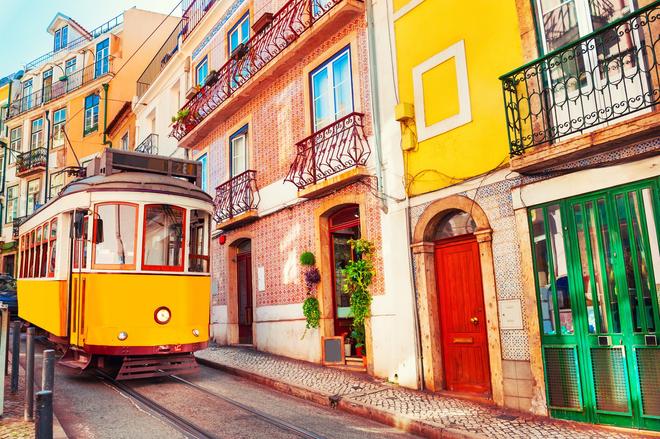
Portugal's historical colonial significance is best remembered on the outskirts of Belém, where you'll find, for example, the enormous Monument to the Discoverers or the 16th-century Torre de Belém, an original part of the fortifications. A sweet vice you must indulge in Lisbon (and not just once) is the local traditional dessert Pastel de nata. Pastéis de nata are luxurious Portuguese puff pastry cakes filled with yolk cream.
If you have time to venture beyond Lisbon, make a trip to Cape Cabo da Roca – the westernmost mainland tip of Portugal and continental Europe. At the main train station, Cais do Sodre, take the train to Cascais and from there take a bus to the Atlantic. Here, enjoy the view of the churning ocean from cliffs up to 140 metres high. The westernmost point is marked by a monument with carved coordinates. The more adventurous will be happy to hike up, and about 400 metres from the monument (in both directions), descend a rocky path to one of the small beaches below the cliffs.
Athens
Our final tip for your March sightseeing holiday is Greece and its capital Athens – an icon of the ancient world. March is one of the rainiest months in the generally dry conditions here, which translates to a 6 day chance of getting wet in March. With average March temperatures of around 16 °C and 6 hours of sunshine per day, it's a very good weather for exploring all the famous sites here.
The Acropolis is a sacred Athenian hill with the temple of the goddess Athena – the Parthenon. In the past it was the centre of the world civilization of the time and today it forms the landmark of Athens and is a popular tourist destination. From the Acropolis you will have a beautiful view of the whole city and the Aegean Sea with the port of Piraeus. Not far from the Acropolis, see the remains of the largest temple of its time dedicated to Zeus himself, the Temple of Zeus of Olympus.
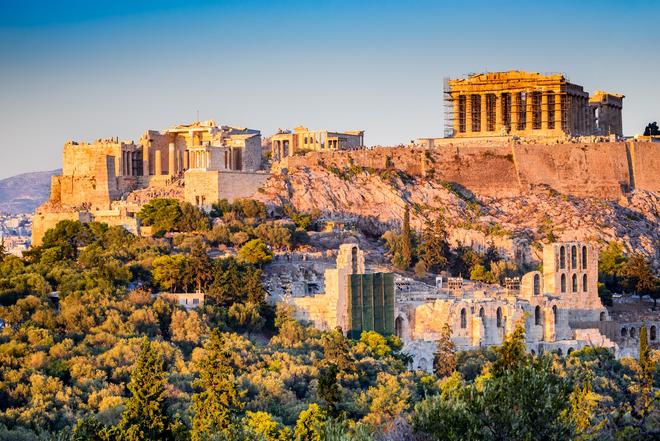
The Acropolis is undoubtedly Athens' most famous hill, but the highest peak is Lykavittos Hill at 277 metres. More fit travellers can make their way up on foot, which takes about half an hour. If your feet ache from a day's wandering around the ancient monuments, be sure to take the cable car up. You will be rewarded with amazing views of the entire city and the Acropolis.
Last but not least, Athens will tempt you with its delicious Greek cuisine, which inherently includes fresh Greek salad with feta cheese, greek yoghurt tzatziki, lamb moussaka and the very famous gyros. For sweets, we recommend baklava (layers of puff pastry interspersed with nuts and honey) or challah made from semolina or sesame seeds and flavoured with honey, nuts and dried fruit.
